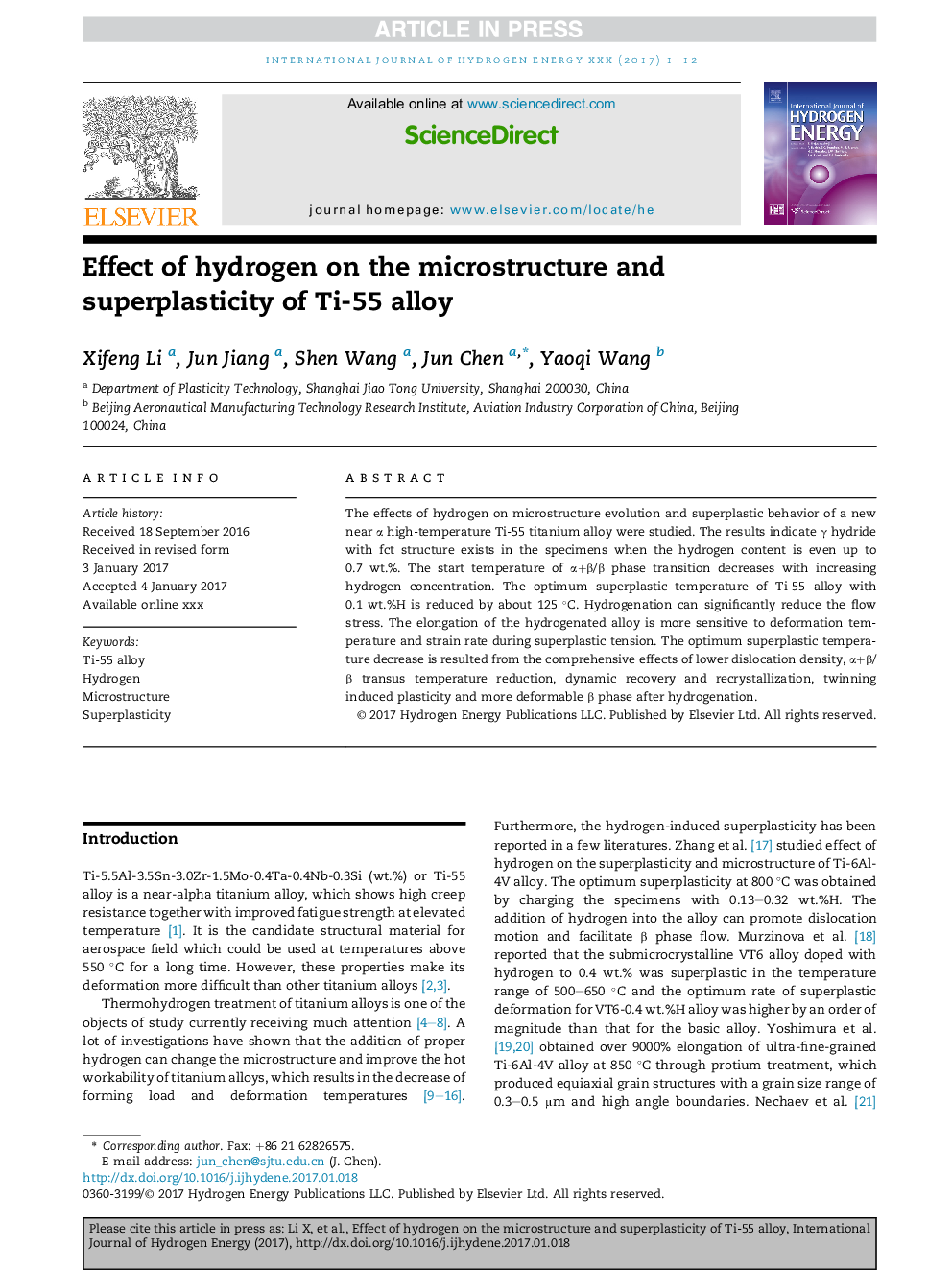| Article ID | Journal | Published Year | Pages | File Type |
|---|---|---|---|---|
| 5146841 | International Journal of Hydrogen Energy | 2017 | 12 Pages |
Abstract
The effects of hydrogen on microstructure evolution and superplastic behavior of a new near α high-temperature Ti-55 titanium alloy were studied. The results indicate γ hydride with fct structure exists in the specimens when the hydrogen content is even up to 0.7 wt.%. The start temperature of α+β/β phase transition decreases with increasing hydrogen concentration. The optimum superplastic temperature of Ti-55 alloy with 0.1 wt.%H is reduced by about 125 °C. Hydrogenation can significantly reduce the flow stress. The elongation of the hydrogenated alloy is more sensitive to deformation temperature and strain rate during superplastic tension. The optimum superplastic temperature decrease is resulted from the comprehensive effects of lower dislocation density, α+β/β transus temperature reduction, dynamic recovery and recrystallization, twinning induced plasticity and more deformable β phase after hydrogenation.
Related Topics
Physical Sciences and Engineering
Chemistry
Electrochemistry
Authors
Xifeng Li, Jun Jiang, Shen Wang, Jun Chen, Yaoqi Wang,
